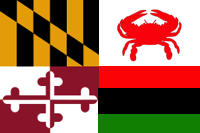Error message
- Deprecated function: The each() function is deprecated. This message will be suppressed on further calls in _menu_load_objects() (line 569 of /home2/dsakers/public_html/sw/includes/menu.inc).
- Deprecated function: implode(): Passing glue string after array is deprecated. Swap the parameters in drupal_get_feeds() (line 394 of /home2/dsakers/public_html/sw/includes/common.inc).
Newsletter Week of 31 July 2020
This week was largely devoted to two projects: my Analog column and the next Rule of Five episode.
The review column was for the November/December 2020 issue. Usually I start my columns with an essay okn some aspect of science fiction. then review 8-9 books. For the end of the year issue, I ditch the essay and recommend sf books as holiday gifts. The conceit is that this is a way to trick non-sf readers into reading science fiction, thus getting them hooked. I cover more books that averge; this time around, I reviewed no fewer than 12 titles.
It's a fun way to talk about books that I might not ordinarily review—or to look at regular books from a slightly different viewpoint. Of course, the year-end column is a lot more work than my regular columns. Not only do I have to read and review more books, but in order to fit them all in, my reviews have to be shorter. Often I'll write the review the way I usually do, then cut it by a quarter or so. That takes even more time and effort.
Still, I enjoy writing the year-end columns perhaps more than the regular ones. So all the extra time & effort are worth it.
The monthly Rule of Five episodes are far and away the writing I currently enjoy most. The narrative is huge and multi-threaded; my outline is a big color-coded spreadsheet following different groups and characters. For each episode, there are a handful of scenes, involving one or moire characters, each scene with a specific purpose. Like all my outlines, this one is short on details. I might describe one scene as "X confronts Y" or "X, Y, Z investigate the anomaly" or just "departure."
The fun part comes in fleshing out those scenes. Where does X confront Y? When? What else is going on? Are they together, or is this a virtual confrontation? What do X and Y each want to get out of this confrontation? What emotions do I want the reader to feel? Which concrete details can I include, and can I use them to give more information about the background and/or to reveal something about the characters? What information needs to be conveyed to the reader? What other scenes will this one help set up, and how?
I'm generally pondering all these questions in the weeks before, so when it comes time to actually start writing the scenes, I'm ready. Then it's just a matter of putting the words down, editing, and then posting the column.
- Finished & submitted November/December Analog column
- Finished Episode 2.23 of The Rule of Five (available Saturday morning for Patreon supporters)
- Ripped 2 more DVDs to mp4
- Legion of Super-Heroes website: adding additional DC characters
- Added 200 words to my memoir
- More work on the next gay erotic short story

Our hamster, Covid, discovers some new foods he's never tasted before.
The Allusioniost (podcast)
 The flag of Maryland, pictured to the right, was aopted in 1904. It's the heraldic arms of Cecil Calvert, founder of the Maryland colony. The black-and-yellow quarter, the Calvert arms, came from Cecil's father. The red-and-white part, the Crossland arms, came from his mother's family.
The flag of Maryland, pictured to the right, was aopted in 1904. It's the heraldic arms of Cecil Calvert, founder of the Maryland colony. The black-and-yellow quarter, the Calvert arms, came from Cecil's father. The red-and-white part, the Crossland arms, came from his mother's family.
The Calvert arms were always asswciated with the state. During the Civil War, Maryland had soldiers on both sides: Unionists often flew the Cavlert arms, while Confederates flew the Crossland arms. The flag uniting the two was proposed as a symbol of the reunion of the state.
Needless to say, some have argued that the Crossland portion, because of its association with the Confederacy and racism, has no place in a contempoirary flag. Others argue that Cecil's arms pre-date the war (or, indeed, the colony of Maryland) and have historical meaning beyond the racist one, complicating the question.
I'd like to propose a possible solution. The flag, as you can see, has four quarters; by heraldic convention, both the Calvert and Crossland designs are repeated. There's nothing to prevent us from filling the duplicated quarters with other designs. (The royal arms of the UK have done this sort of thing fairly often).
For example, here's a rough idea for adding two additional quarters: the traditional Maryland blue crab, and the African-American history banner to represent Maryland's deep and rich Black history.

"Being in politics is like being a football coach; you have to be smart enough to understand the game, and dumb enough to think it's important."
-Eugene McCarthy
Betsy Anthony Childs, for taking care of the house and the hamster while we were on our road trip.
